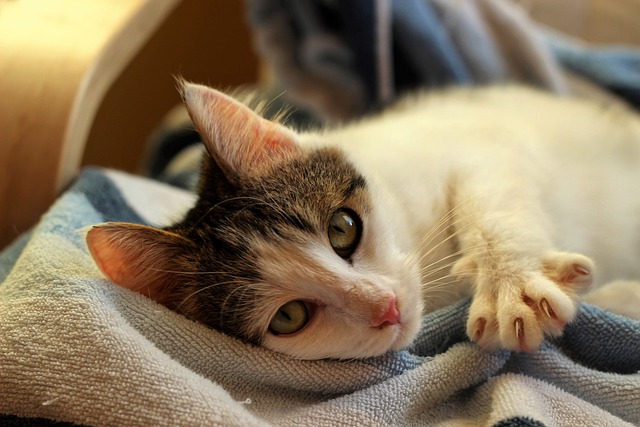As a cat owner, you are used to finding ‘kitty’ things on your surfaces.
From fur to whiskers, there’s no telling what our feline friends leave behind.
However, when you vacuum the carpet only to find what looks like your kitty’s claw, that can be distressing.
Knowing how much your cat needs her claws, you will wonder if she is okay.
However, before you dial your vet, you should know that claw shedding is a natural occurrence in the feline world.
To help you understand it better, here’s a detailed guide that explains the basics of cat claws shedding.
Do Cats Shed their Claws?
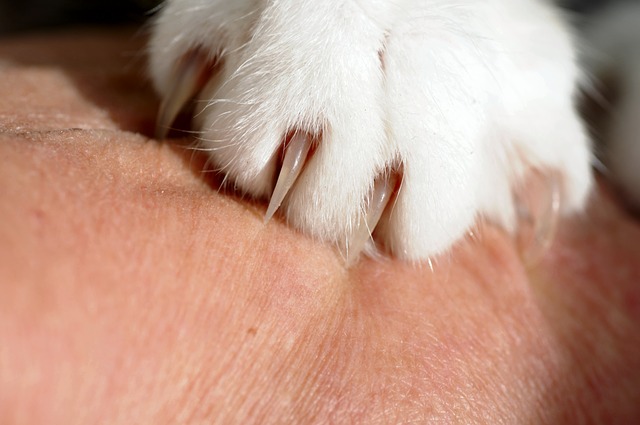
A cat’s claw, also known as a talon, is an appendage shaped like a scythe attached to the distal bone.
Right in the middle of the claw is the quick, an area responsible for giving the claw nutrition and blood supply.
Once the outer layer of the claw has grown out of the quick, it falls out to give room to the growth of a new, sharper layer of the claw.
The nail itself is made of a protein known as the quick. When the cat sheds its claws, she is essentially eliminating outgrown keratin to make way for new nail growth.
The keratin grows from the quick. As the outer layer grows in size, it dies off as it moves farther away from blood and food supply.
It then becomes a sheath that surrounds the younger and healthy nail.
In a sense, the cat’s nail has layers like those of an onion. As the outer layer grows, it reaches a point when it detaches and falls off.
Not only is claw shedding natural but it is a beneficial process for the kitty.
It gives rise to an even better claw used for climbing, hunting, and defense reasons.
Without shedding, the claw would grow and curl and end up piercing the paw pad.
Besides being uncomfortable, this can cause an infection which can bring more problems for the kitty.
Cats shed their claws through scratching—the more the reason you should get your kitty scratching posts if she doesn’t have one already.
Without one, your walls, rugs, sofas, and clothes will suffer for it.
Trimming your kitty’s nails also speeds up the process of claws shedding.
How Often Do Cats Shed Their Claws?
According to Dr. Smith of Veterinary Medicine at Central Texas Clinic, each cat’s claw sheds every two or three months.
A cat has a total of 18 toes (some have more than that). That means that within a period of two or three months, the cat will lose a sheath from all 18 claws.
If the kitty doesn’t step foot outside, expect to find lots of cat claws around the home.
If you are in the habit of trimming your kitty’s nails regularly, you may never see claws as they are in a small size.
How Can I Help My Cat Shed Her Claw Sheath?
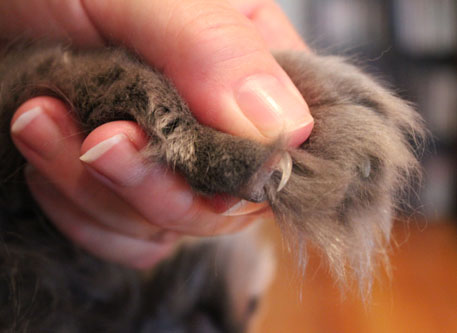
The best method is to hone your furball’s nails every so often.
When you cut the tips of her nails, you make work easier for her. She won’t need as much scratching to get the sheath out.
Trimming the nails is no mean feat but with a little practice, you will get it.
See, your cat’s claws are nothing like your own. Granted, both are made up of keratin but they are different in design.
For a cat, the quick is located in a precarious spot that it can be easy to snip it causing pain to the kitty.
If you have never trimmed your cat’s nails before, ask for professional help. Watch how the vet clips and the measures they take to ensure they don’t trim the quick.
Trimming the nails not only accelerates the shedding process but also makes the kitty a little bearable. Those that have been at the receiving end of a cat’s scratching can attest to this.
Plus, trimming prevents the likelihood of nail tearing. According to the ASPCA, cat owners should trim their kitty’s nails once every 10 -14 days.
This way, your upholstery and family members will be spared from painful scratches.
In addition to providing scratching posts and trimming your kitty’s claws, you can also use claw claps to help with scratching.
These are plastic fake nails put on the claws to prevent them from scratching everything.
With them, your kitty can still retract and extend her claws but since the nails are covered, the kitty will not do any damage.
The process of putting the caps on and off aids in removing dead layers of the claw.
If you are wondering, the kitty’s nails will still grow under the caps.
Related Post: 10 Cat Scratchers that Dull Claws
How to Remove Cat Claw Sheath
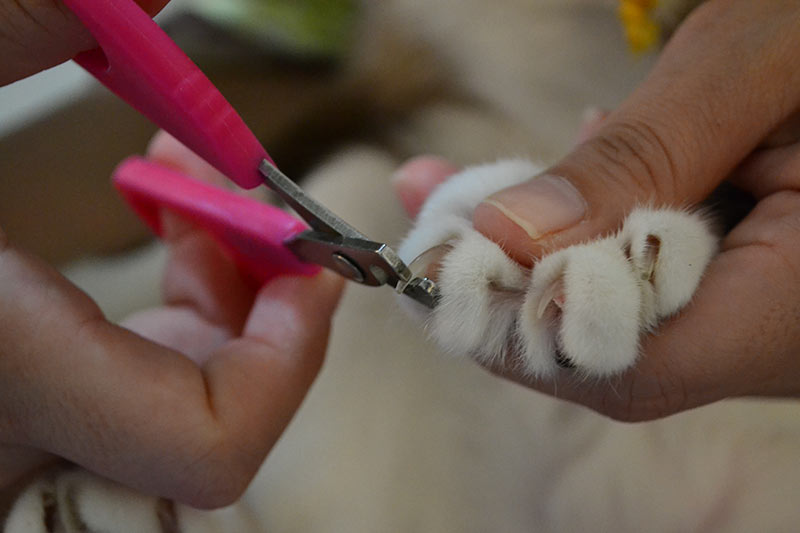
Most kitties remove their claw sheaths as they scratch or through trimming.
However, as the little guys get older, they tend to scratch less, meaning their nails can easily grow out.
If yours falls in the category, you can manually remove the sheaths by yourself.
Follow this procedure to get rid of the sheaths.
- Grab Quality Clippers: Avoid the temptation of using scissors as they are ineffective and hard to use. A quality nail clipper delivers fast results, makes it easy to remove the sheaths, and is a safer option for the kitty.
- Get rid Of 1/16 Inches Of The Claw: If you go beyond this, you risk cutting through sharper and healthier claws beneath the sheath. Cut little by little until you cut the amount required.
- Remove Excess Keratin: After trimming the tip of the claw, excess keratin will fall on the area. To make things visible, brush it off. While you are at it, brush off unwanted stuff such as dirt, gunk, and fur.
- Even Things Out: Once you are done with the first three steps, trim the claws to smooth and balance them out. Ensure they are sharp as they should.
Related Post: States Where Declawing Is Illegal
What Happens If A Cat’s Claw Comes Off?
While normal shedding of the claw is safe for your kitty, the entire claw should never be ripped from the toe.
The latter is an extremely painful occurrence yet it happens.
Often, your cat can lose her entire claw if it gets stuck on an object and gets pulled off in the process. This can be a rug, piece of cloth, grass, tree, you name it.
In that case, the claw will bleed and cause immense pain to your kitty.
If left untreated, the affected area will become infected.
If you find an entire claw and not a sheath, watch out for bleeding, repeated licking, and limping. Let the vet examine your feline friend and offer the necessary treatment.
Related Post: Cat Claw Bent Sideways: What Does It Mean?
Do Cats’ Claws Grow Back When Ripped Out?
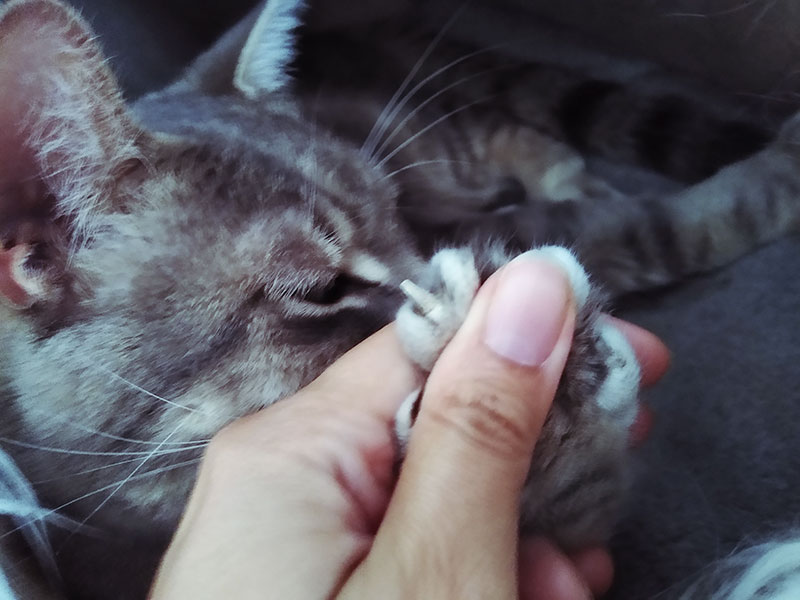
When your cat’s claw gets pulled out and ripped off completely, it reveals the flesh part.
It is the same case as if you knocked the corner of a wall with your small toe and had the entire nail pulled out.
If it has ever happened to you, you know the nail grows back eventually. The same rings true for the kitty.
Although the nail has technically left the bone, everything else is intact.
The blood supply and nutrition will stimulate the production of a new nail.
However, this will take a few months. Meanwhile, the exposed flesh is at high risk for infection.
You want to monitor the wound closely to make sure it doesn’t get infected.
Cat Claw Sheath Not Shedding: What Does It Mean?
This is often a problem for older cats. As our feline buddies age, their claws grow faster than before.
If the cat doesn’t use a scratching post often or doesn’t have her nails trimmed, shedding becomes difficult.
As mentioned, claws that don’t shed spell trouble for the kitty.
They curl beneath and hurt the paw pad. In addition, they can get stuck in things and pull the whole claw in the process.
You might want to manually remove the sheath using the procedure outlined above.
To prevent further issues, provide enough scratching posts for your kitty to motivate her to scratch more.
Also, ensure her nails are trimmed every 10 or so days to speed up the shedding process.
Final Thoughts
A cat needs claws for survival, protection, locomotion, and convenience.
Nature has made it so that felines always have sharp claws by shedding the weak outer layers.
The next time you find an empty shell of your cat’s claw, don’t panic. The only time to get concerned is if the entire claw is pulled off.
Related Posts:
20 Things You Didn’t Know About Cat Leg Anatomy
Common Cat Toe Beans FAQs Answered
Normal Cat Paw Vs Polydactyl—A Complete Guide To Your Kitty’s Paws

Hi! I am Eleanor Price. I started this website after my cat, Louie, almost died from a case of botulism (a type of food poisoning often caused by bacteria that grow on food items). Turned out that my cat’s diet was the problem. I have made it my duty to provide the best information and recommendations about everything cat lovers need to know about their felines’ health and wellbeing. My goal is to find the most informative content on anything feline-related and share it with fellow hardworking kitty lovers.

